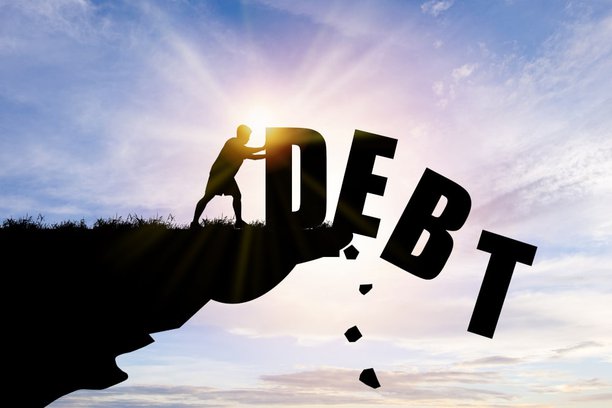What is the Difference Between Bad Debt and Good Debt?

For many Canadians, debt is a prevalent component of personal finance, which is why being able to discern the distinction between bad debt and good debt is vital for making well-informed financial choices – after all, even though debt is often linked to its consequences, not all debt is identical.
Recognizing the disparities between bad debt and good debt can illuminate their effects on your financial well-being, enabling you to enhance your financial standing and elevate your credit score. Furthermore, it can empower you to make the best decisions when it comes to your finances and your future.
The Pitfalls of Bad Debt
As a general term, bad debt is defined as borrowed funds used to finance purchases that do not generate long-term value or appreciating assets. This type of debt usually involves unnecessary or superficial expenses that don't contribute to financial growth or enhance your overall life. Examples of bad debt include credit card debt from impulsive shopping, high-interest payday loans, or loans taken for extravagant vacations or luxury items.
Bad debt can lead to several negative consequences that may impede your financial advancement. Often accompanied by high-interest rates, this type of debt results in paying considerably more for credit accounts and fees over time. Moreover, bad debt can create a cycle of dependency where debt continues to grow due to high interest or ongoing minimum payments, making it difficult to escape this loop.
Additionally, bad debt can adversely affect your credit score, hindering your ability to secure better interest rates or access future loans. It can also place strain on your overall financial situation, limiting your capacity to save, invest, or achieve long-term financial objectives.
Understanding Good Debt
On the other hand, good debt entails borrowing funds to invest in assets or experiences that could appreciate in value or contribute to your long-term financial prosperity. This kind of debt is purpose-driven, such as financing education, buying a home, or launching a business. Examples of good debt include student loans, home mortgages, or loans for starting or expanding a business venture, which can ultimately provide a strong foundation for your financial growth over time.
In contrast to bad debt, good debt presents several advantages that can positively influence your financial circumstances, such as granting access to opportunities that might be difficult to achieve without the necessary capital. For example, a mortgage enables homeownership and equity building, while student loans can boost earning potential through education.
Furthermore, good debt typically carries lower interest rates compared to bad debt, facilitating manageable payments and potentially resulting in long-term savings. Additionally, some forms of good debt, like student loans or mortgages, may offer tax benefits, further enhancing your financial well-being.
Differentiating Between Bad and Good Types of Debt
There are a variety of factors that can help you differentiate between bad debt and good types of debt. In order to tell the difference between bad debt and good debt, it’s important for you to consider a few key factors:
Purpose: Bad debt is typically collected for non-essential or depreciating purchases, while good debt is taken on for investments or assets that tend to hold long-term value.
Interest Rates: Bad debt tends to come with higher interest rates, increasing your overall cost of borrowing, while good debt often offers you more favourable interest rates.
Return on Investment: Good debt has the potential to generate a return on your investment, whether through increased earning potential, asset appreciation, or other financial benefits. Bad debt, on the other hand, does not provide any tangible returns.
Impact on Credit: Good debt, when managed responsibly, can positively impact your credit score and open doors to better financial opportunities in the future. Bad debt, however, can damage your credit and limit your options for obtaining favourable loans or credit terms.
What Are the Consequences of Living with Bad Debt?
Bad debt can negatively affect your financial standing, as it usually entails high-interest rates, resulting in increased payments over time. It can ensnare you in a cycle of dependency, making it difficult to improve your financial situation. Furthermore, bad debt can harm your credit score, restricting your access to favourable interest rates and future borrowing opportunities.
Bad debt can also put pressure on your overall financial well-being, leading to stress, financial instability, and a reduced capacity to save or invest in necessary purchases. Additionally, it can obstruct your progress in reaching long-term financial objectives, as most of your income will be directed toward paying off debt instead of growing your wealth.
How Does Good Debt Impact Your Financial Well-Being?
Good debt, meanwhile, can offer you a range of short and long-term advantages, including granting access to opportunities that might be unattainable without the necessary upfront capital. Good debt typically features lower interest rates, enabling more manageable payments and the possibility of long-term savings. Some forms of good debt, such as student loans or mortgages, may even provide tax benefits.
Good debt can also increase your earning potential, facilitate asset and equity building, and create opportunities for your financial growth. Proper management of good debt can contribute to a positive credit history, granting better access to loans and more favourable credit terms in the future.
Ultimately, being able to distinguish between bad debt and good debt is crucial for making informed financial decisions - while bad debt can result in financial stress, limited opportunities, and adverse credit impacts, good debt can grant you access to valuable assets and experiences that can contribute to your long-term financial growth.
As a trusted bad credit loan agency, Magical Credit aims to educate Canadians about the nuances of debt and empower them to make informed decisions. By differentiating between bad debt and good debt, our team can help you work towards minimizing harmful debt while strategically using beneficial debt to enhance your financial status. Reach out to a member of our team of professionals today to gain clarity on your finances and your credit.





